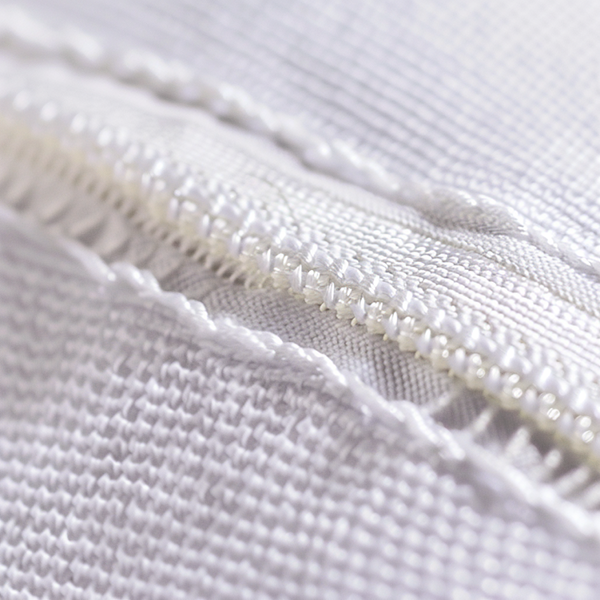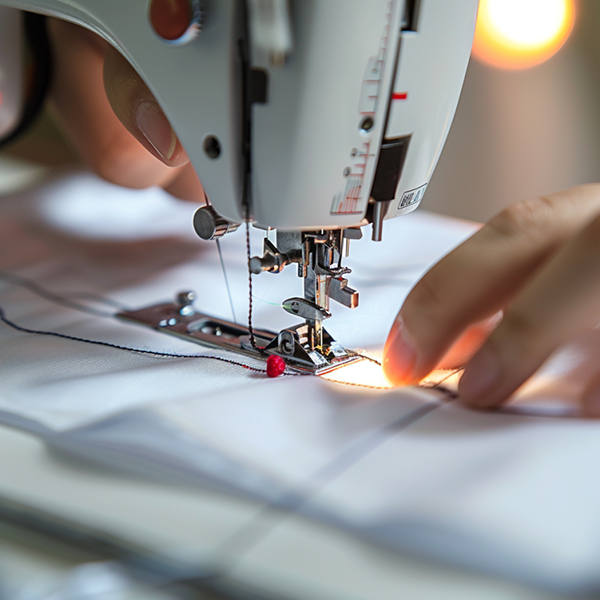OVERLOCK STITCH | No Serger Needed
Use these sewing machine techniques to simulate an overlock stitch without using a serger and ensure edges remain fray-free: Zigzag Stitch: To achieve the optimal result for light to medium weight fabrics, sew along raw edges using a zigzag stitch width of 4-5 and length 1-2, using this stitch for raw edges with raw edges. Overlock Stitch Setting: Many machines offer an overlock stitch combining elements of both zigzag and straight stitches for strength and stretch, making this stitch particularly suitable for knit fabrics. Use an overlock presser foot for neat finishes! Zigzag Plus Straight Stitch: When sewing heavier fabrics, combine zigzag stitching with straight stitching for greater durability. Sew both techniques inside one another for extra reinforcement. Slanted Ladder Stitch: Replicating stretchable serger stitches, this stitch can be easily adjusted in width and length for optimal edge coverage. Trim Seam Allowances: In order to recreate serger edge trimming, cut seam allowances close to stitching before sewing.
Sewing Machine Overlock Stitch Alternatives
You can also simulate an overlock stitch on a regular sewing machine to achieve a finished edge: Zigzag Stitch: When sewing along the raw edge of light to medium-weight fabrics, use a zigzag stitch with a width of 4-5 inches and a length of 1-2 inches (for light fabrics). Overlock Stitch: Combines straight and zigzag stitches for a stable, aesthetically pleasing edge. Three-Step Zigzag Stitch: This three-step zigzag stitch maintains the fabric's stretch while providing excellent elasticity and edge protection. Double Overlock Stitch: Two rows of zigzag stitches with a connecting straight stitch are suitable for heavily abraded fabrics. Trapezoid Stitch: Provides stretch and strength similar to an overlock stitch. Zigzag with Straight Stitch: For added durability, combine a zigzag stitch with a straight stitch for added internal reinforcement.
Special Tips for Overlock Sewing
Reduce Bulk at Crossed Seams: At thick intersections, make small snips in seam allowances (not through seams) on opposite sides to spread bulk outward. This will simplify machine sewing and ensure more reliable stitching results. Neckbands and Circular Seams: Cut small slits at both the start and end of circular seams to prevent fabric bunching and ensure precise alignment. Hemming Knits Without Coverstitch Machine: Fold hems twice, disengage the blade, and sew from the wrong side catching only the folded edge for a neat and stretchy finish. Adjust Differential Feed Settings: Modifying differential feed settings can help avoid stretching or puckering of knit fabrics with curves. Threading and Tension: For four-thread machines, thread each thread carefully so it matches perfectly; adjust tension accordingly to ensure consistent stitches. Test on Scrap Fabric: Always practice on scraps to fine-tune stitch length, tension, differential feed settings and blade settings. Unpick Overlock Stitches Properly: Learn techniques for safely unpicking overlock seams without risk of fabric damage.






 Hot News
Hot News